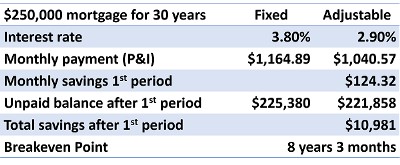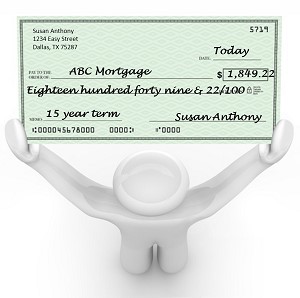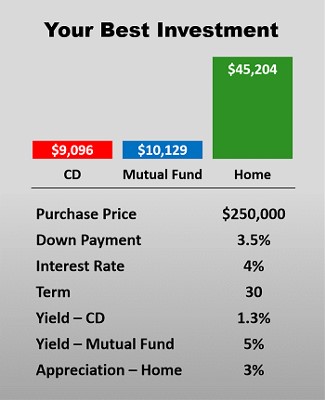Minimize Investment Risk
 Buying rental property can be an excellent decision and the better informed you are, the more likely you'll have favorable results. The following suggestions can help you with your decisions.
Buying rental property can be an excellent decision and the better informed you are, the more likely you'll have favorable results. The following suggestions can help you with your decisions.
Real estate is a long term investment affected by supply, demand and the economy. It isn't an investment that is easily converted to cash. The costs to acquire and dispose of real estate are sizable and need to be spread over years to minimize their effects on the rate of return.
Invest in average price homes or slightly below average price to appeal to the broadest market not only when you are renting but later on when you sell it. The average price is relative to the market you are in and those specific prices.
Lower-priced homes will rent for more relative to higher-priced homes. There is an inverse relationship between rent as a percentage of the price. As the price increases, the rent as a percentage of the price decreases. For example, a $200,000 home might rent for $1,750 a month or 0.88% where a $400,000 home might only rent for $2,250 a month or 0.68%.
Choose predominantly owner-occupied neighborhoods because when you sell the home, it will appeal to a homeowner who will most likely pay a higher price for the home. Homes in predominantly tenant-occupied neighborhoods tend to sell to investors who pay lower prices and will not be emotionally involved with the purchase.
Purchase a property with the idea of selling it in mind. You may be able to get a property for a bargain price today but if it is due to a functional obsolescence like a bad floor plan or not enough bathrooms, that problem will still be there when you're ready to sell the property. Identify what the problem is and what solutions are available. The property may rent fine in that condition but before you sell, it will need to be corrected.
Get the home inspected before you purchase it. Having the property checked out can save thousands in unanticipated expenses.
Consider getting a home warranty on your rental. The annual premium can limit the out of pocket expenses for repairs and maintenance.
Risk can be minimized by understanding the investment and what is involved in the acquisition, operation and disposition. For the typical homeowner, rental property is something that they can relate to because of the similar attributes of the home they live in.

 "If I tell you it's going to rain, you can put the buckets on the porch." If you grew up in the south, you made have heard this expression when a person is testifying to the veracity of his word. If you know a person and/or their reputation, you know whether you can trust their word or not.
"If I tell you it's going to rain, you can put the buckets on the porch." If you grew up in the south, you made have heard this expression when a person is testifying to the veracity of his word. If you know a person and/or their reputation, you know whether you can trust their word or not. Most of us understand the expression "burning the candle at both ends" to mean working so hard that you burn yourself out. Normally, that wouldn’t be a good idea unless it is intentional.
Most of us understand the expression "burning the candle at both ends" to mean working so hard that you burn yourself out. Normally, that wouldn’t be a good idea unless it is intentional.


 One of the big banks has a voluntary program available that transfers $100 each month from your checking account to your savings account. In five years, the account owner would have over $5,000 because of a type of forced savings.
One of the big banks has a voluntary program available that transfers $100 each month from your checking account to your savings account. In five years, the account owner would have over $5,000 because of a type of forced savings.  An Automated Valuation Model, AVM, is a computer approach that looks at public records to make a determination based on square footage, comparable sales and other elements. It is as easy as putting your address in a blank but unfortunately, AVM results may only be accurate about 20% of the time.
An Automated Valuation Model, AVM, is a computer approach that looks at public records to make a determination based on square footage, comparable sales and other elements. It is as easy as putting your address in a blank but unfortunately, AVM results may only be accurate about 20% of the time. The principle to pay yourself first has been referred to as the Golden Rule of Personal Finance.
The principle to pay yourself first has been referred to as the Golden Rule of Personal Finance.





